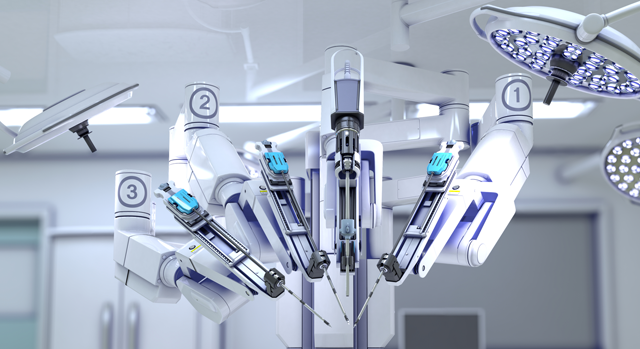First Robotic Parkinson’s Surgery in Asia
May 17, 2017 | Expert Insights

Asia witnessed the first robot assisted surgery in Kochi on 17th may, 2017 after an auto driver was treated Parkinson disease in the Amrita Institute of Medical Sciences.
First robot assisted surgery
45 year old auto driver, Zubair suffering from Parkinson’s disease got a new life after undergoing deep brain stimulations (DBS) implantation at Amrita Institute of Medical Sciences. The operation was a first of its kind which was a robot assisted DBS implantation performed in Asia for Parkinson’s disease.
DBS is a neurosurgical procedure that involves the implantation of a neuro-stimulator (brain pacemaker) in the patient’s body which through wires connected to the head, sends electrical signals to specific areas in the brain. DBS has provided treatment resistant disorders like Parkinson’s, epilepsy, movement disorders, chronic pain, depression and obsessive compulsive disorders.
Automation in health sector as well
Automation in the IT sector in India is becoming a common phenomenon and now it is seen reaching the health sector as well. Robotic surgery is emerging as a new trend which has tremendous potential in the future. It is therefore, important to keep abreast with the new technologies that are needed in the surgeries. It is becoming popular because of the advantages associated with it like greater visualisation, shorter hospitalisation, minimal scarring, reduced blood loss and reduced risk of infections.
However, this could have serious implication on the economy as it would lead to unemployment and layoffs of doctors, a similar case that India is witnessing recently in the IT sector.
Analysis
India has conducted various robot assisted surgeries. Robotic surgery is still growing in India, while Mumbai has recorded around 70,000 surgeries in 2015, Delhi and Bangalore have conducted 20,000 and 25,000 surgeries respectively. A total of 26 Da Vinci systems (robotic surgery) are operative in India at various hospitals. There are around 147 surgeons trained in robotic surgery who conduct about 300-400 robotic surgeries. India has a target to increase robotic surgeons to 300 by 2020. Many from Middle East and Africa are seen coming to India for the surgeries either because they are too expensive there or due to lack of advanced robot assisted facility.
US has been the leader in robotic applications. Since 2007, there has been a 34% increase in robot assisted surgeries till 2010. There has been a growth in robotic surgeries in urology and gynaecology in the US. The number of Da Vinci systems increased from 338 to 441 which shows US progression towards robotic surgery. The world is seen moving towards robotic surgery as it allows surgeons to perform complex surgical operations using a minimally invasive approach, leaving behind less scars and takes lesser time to recover.
Assessment
Although growth in robotic surgeries would mark a development in technological sector and be time effective, yet there could be serious implications associated with it. Firstly, there is a fear that these robots might replace surgeons which could lead to unemployment in sectors. Secondly, although it is time effective, it would be very expensive for the poorer sections in India. Also, this new robotic surgery could replace the traditional (open surgeries) methods as the growing surgeons will be trained in robotic surgeries. However, at the same time it would allow doctors to conduct a long-distance surgery.








Comments